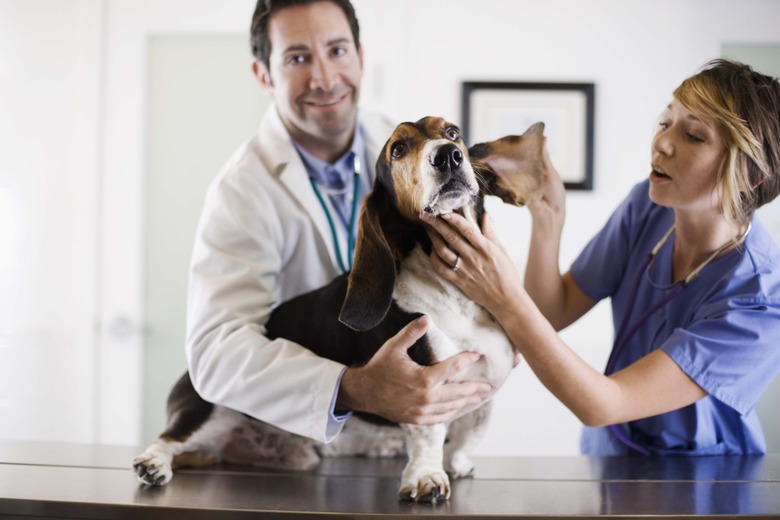Cauliflower Ear In Dogs
What is commonly referred to as "cauliflower ear" in dogs is a deformity of the ear that results from an untreated aural hematoma. The fluid-filled swelling of the hematoma becomes firm and thickened over time, resulting in the cauliflower ear. An aural hematoma occurs when blood accumulates within the cartilage layers of the ear. The condition is most common in dogs with long, floppy ears, such as setters, spaniels, and hounds.
Symptoms of dog cauliflower ear
Symptoms of dog cauliflower ear
The most visible symptom of an ear hematoma is the swelling that occurs in the ear. Your dog will likely scratch at the swollen ear and may try to rub it on the ground or with his or her paw.
The ear is generally painful for the dog and hot to the touch. The dog may shake his or her head often to try to alleviate the discomfort associated with the hematoma. If your dog has a light complexion and a short coat, you may notice the ear has taken on a bright pink or red color.
Causes of cauliflower ear in dogs
Causes of cauliflower ear in dogs
The condition occurs most frequently in dogs with long ears because these types of dogs are more prone to ear infections. These types of dogs are also likely to have parasites or a foreign object in their ear that goes unnoticed because the ear hides them. Dogs with clotting or bleeding disorders may develop aural hematomas as well.
The condition occurs when the dog shakes its head to try to relieve itching or discomfort of the ear. The violent shaking of the head causes blood vessels within the ear to break, resulting in a hematoma.
Treatment of aural hematomas
Treatment of aural hematomas
Treatment of the ear hematoma begins by identifying and treating the underlying condition, such as ear infection or mites. The hematoma will then be reduced using needle aspiration. However, with only needle aspiration, the condition is likely to return.
In most instances, the veterinarian must perform surgery on the ear to ensure the hematoma does not come back. The surgery generally involves making an S-shaped incision on the surface of the ear and flushing out the blood and clots that caused the swelling.
Prevention of dog cauliflower ear
Prevention of dog cauliflower ear
Preventing ear hematomas is not always possible. Practicing strict parasite control, however, by using a product such as Frontline, Advantage, or Revolution is a good first step. These products are all available from your veterinarian.
It's also important for you to examine your dog's ears regularly to ensure he or she doesn't have an ear mite infestation. Dry the insides of your dog's ears if he or she has been swimming, had a bath, or has been out in the rain. Cleaning the ears regularly can also help prevent an ear mite infestation.
Cleaning your dog's ears
Cleaning your dog's ears
For dogs with floppy ears, such as basset hounds, turning the ears inside out to air dry them may help to prevent ear infections and keep the ears clean. It's a good idea to clean your dog's ears each week. Wiping the dog's ear with a dry cotton ball or one that is slightly moistened with mineral oil is about all it requires in healthy ears.
If the dog's ear is dirty, wiping it with a cotton ball dipped in mineral oil is a good way to start. Wrap the cotton ball around your finger and insert your finger as deeply into the canal as you can, but do not poke down into the ear. It may take several cotton balls to get the ear clean.
Familiarize yourself with what your dog's ears look like when they are healthy and clean. If you notice your dog scratching at his or her ears or shaking his or her head more than usual, it may be time to clean your dog's ears. If you notice your dog's ears look inflamed and red, are painful when you touch them, or smell yeasty, it's time to consult your veterinarian.


